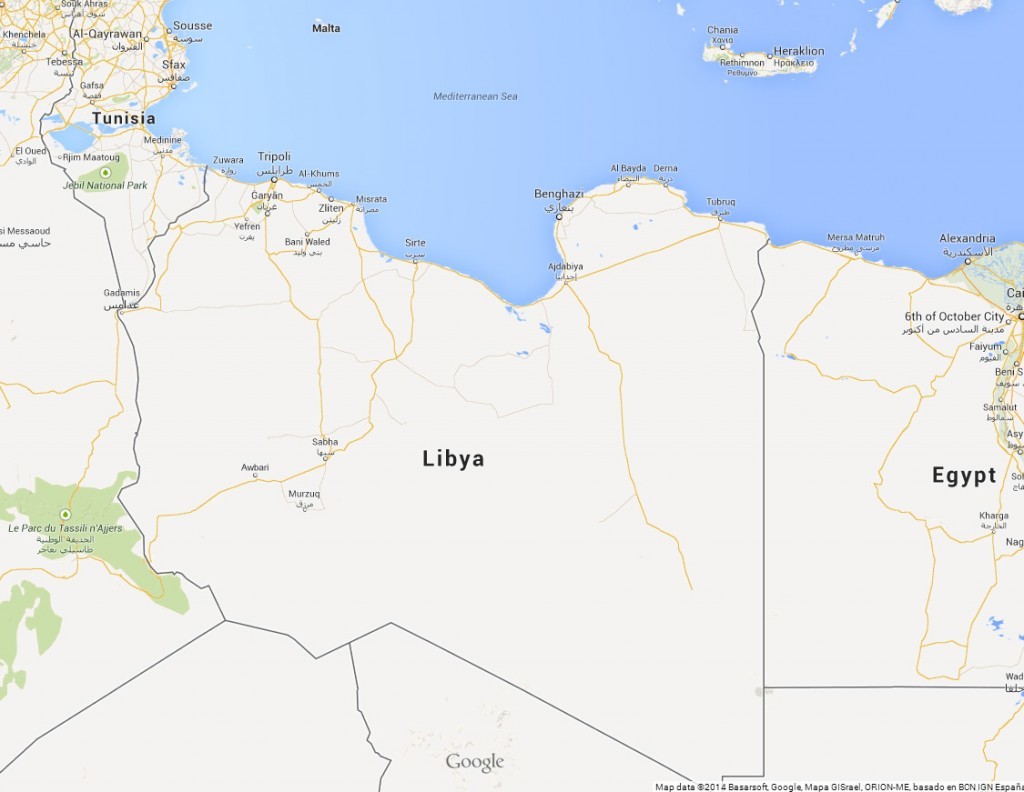
Libyan oil production has fallen below 300,000 barrels a day after Islamist militants shifted attacks to energy facilities including the country’s largest oil export terminal, said Energy Aspects Ltd.
Output is the lowest since May and down at least 65% from a recent high of 850,000 barrels a day in October following the assault on the Es Sider terminal, according to the Energy Aspects estimate. Libya holds Africa’s largest oil reserves.
The fighting last week marked a turning point in the unrest that followed Muammar Qaddafi’s 42-year rule, according to Energy Aspects and Eurasia Group consultants.
All the factions, including the Islamist militia coalition known as Libya Dawn, had committed to spare the energy industry that provides 80% of public spending.
“The latest phase in fighting is a serious development as Libya Dawn is now trying to gain control of oil facilities, which up to now have generally been spared from the worst effects of the conflict,” Richard Mallinson, a London-based geopolitical analyst with Energy Aspects, said.
One of six storage tanks set ablaze in the assault on Es Sider, Libya’s largest oil port, collapsed yesterday, Ali Al Hasy, spokesman for the Petroleum Facilities Guard, said.
The fires started December 25, when the Islamists shot rockets at the port in a second attempt to take it.
The terminal has a capacity of 6.2 million barrels of oil, according to Mohammed Elharari, a spokesman for National Oil Corp.
There are a total of 21 tanks there, the Libya Herald newspaper said.
The extended fighting helped bring a temporary halt to the slump in prices.
Brent crude rose as much as 98 cents yesterday to $60.43 a barrel before settling down 2.6% at $57.88, the lowest since May 2009.
The global benchmark lost 9 cents to $57.79 a barrel on the London-based ICE Futures Europe exchange at 12:15 p.m. Singapore time.
“The oil market has already largely priced in ongoing disruptions to Libyan output and so even if the situation escalates, the reaction in oil prices could be muted,” Mallinson said. Libyan oil production has fallen below 300,000 barrels a day, he said.
The main combatants in the last round of fighting are the internationally recognized government of Abdullah al-Thinni and the self-proclaimed regime of Omar al-Hassi, who has the backing of the Islamist militias that took control of the capital Tripoli in July, forcing his rival to move to eastern Libya.
Libya’s crude output had been increasing despite the clashes of opposing forces in and near the capital Tripoli, reaching a year-high of 850,000 barrels a day in October, more than half the average before the overthrow of Qaddafi.
The trend reversed in November, when the conflict spread to Sharara, the nation’s largest producing oilfield, cutting output to 580,000 barrels a day.
Production declined further when Hassi ordered Islamist militias to wrest the terminals in eastern Libya from the control of the Petroleum Facilities Guard that remained loyal to his rival, after Thinni announced plans to take control of oil payments by foreign companies that buy Libyan crude.
The payments were being made through the central bank, which has proclaimed neutrality in the conflict. State-run National Oil also proclaimed its neutrality, calling on the warring parties to spare the oil and gas facilities.
The Islamists’ first attack on Es Sider on December 13 caused no damage to the facilities as fighting took place well outside the port.
In their second attack on December 25, the Islamist militias charged with hundreds of machine gun-mounted pick-up trucks while their artillery shelled the terminal.
They were stopped by warplanes loyal to Thinni.
The country is producing about 350,000 barrels a day, having stopped loading from Es Sider and the neighboring oil port of Ras Lanuf, Libya’s third-largest, according to Elharari, the spokesman for state-run National Oil.
Even this level makes Libya the smallest producer of the 12-member Organization of Petroleum Exporting Countries.
Hundreds of people have been killed and at least 120,000 driven from their homes in the latest round of fighting, according to the United Nations.
“Best case, they stop here; worst case, the escalation continues to a point where all oil production has to cease,” Riccardo Fabiani, a London-based Eurasia Group analyst, said. “Worst case is lot more likely that the best case scenario.”